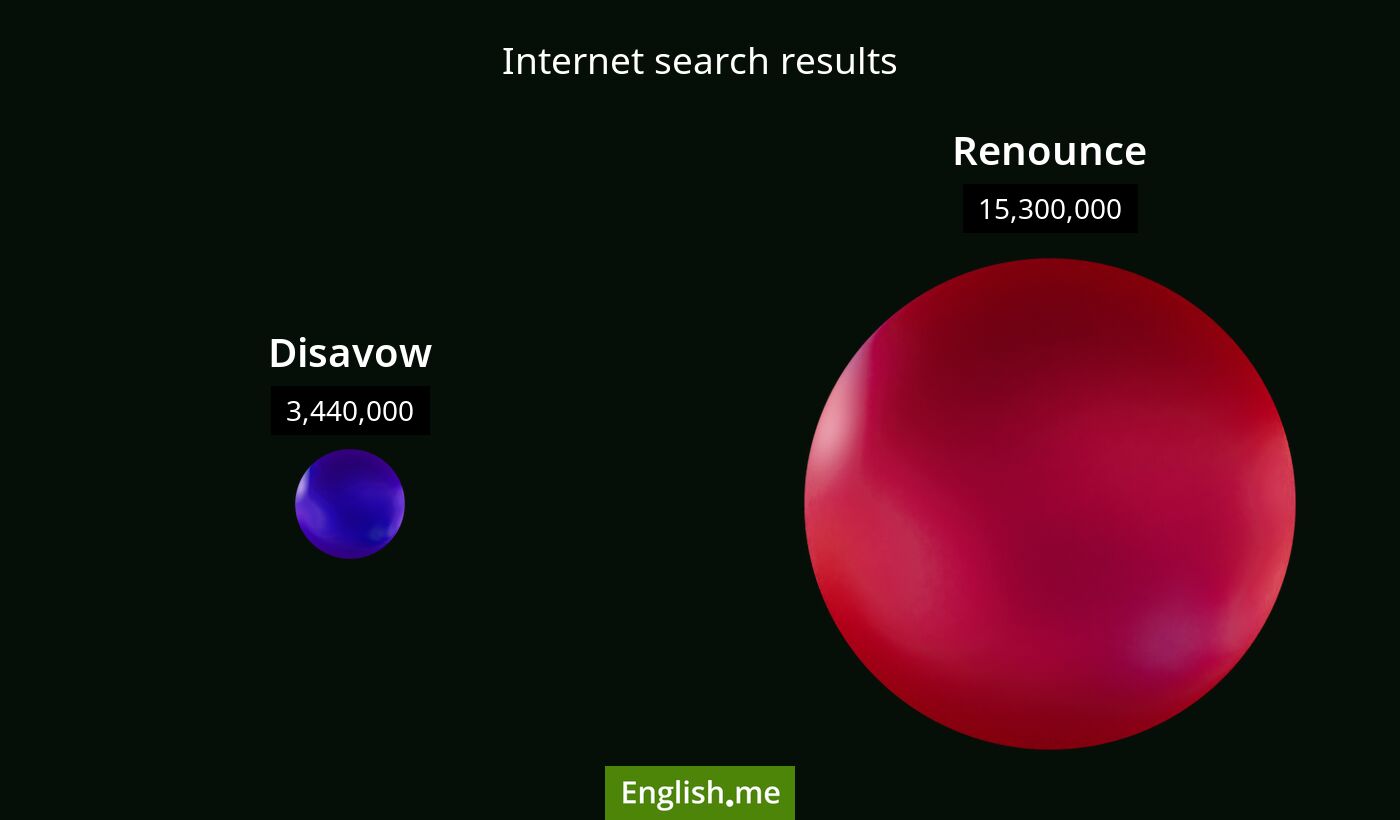"Disavow" vs. "renounce": words of rejection
Reviewed and edited by  Lloyd Cooper 18/02/2025, 21:26
Lloyd Cooper 18/02/2025, 21:26
English.me team member

 What is similar?
What is similar?
Both "disavow" and "renounce" involve rejecting, denying, or distancing oneself from something such as a belief, claim, association, or responsibility.
 What is different?
What is different?
"Disavow" means to deny any responsibility for or connection to something, often disassociating oneself from it. "Renounce" means to voluntarily give up, abandon, or formally reject a claim, right, possession, or belief.
 Which one is more common?
Which one is more common?

 Examples of usage
Examples of usage
Disavow- The politician disavowed any knowledge of the illegal activities.
- She disavowed her earlier statements when new evidence emerged.
- The company disavowed responsibility for the defective products.
- He renounced his claim to the inheritance.
- They decided to renounce their old habits and start anew.
- She renounced her citizenship to become a citizen of another country.

 English
English español
español française
française italiano
italiano deutsche
deutsche 日本語
日本語 polski
polski česky
česky svenska
svenska Türkçe
Türkçe Nederlands
Nederlands